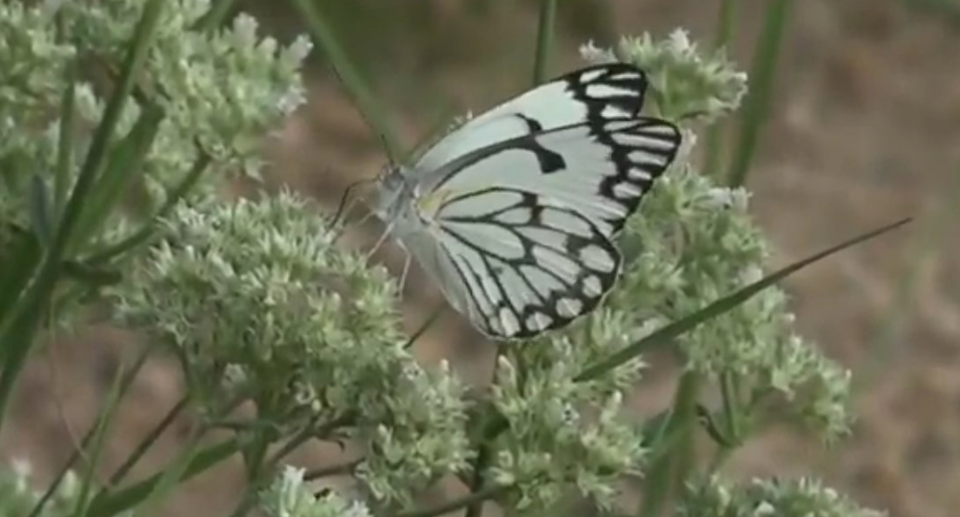Recently, South Africa has been abuzz with talks of the beautiful sight of thousands of white butterflies fluttering through the country’s streets. The fascinating migrating insects passed through Gauteng, Free State, the Northern Cape and some butterflies have even been spotted in Mozambique and Namibia.
These butterflies are known as the Brown-Veined White Butterfly and their annual migration takes place during mid-summer each year, which takes place at the end of January. These butterflies are usually spotted in South Africa’s north, central interior and north-eastern parts. To the untrained eye, they seem to appear in a flurry, but in reality, their numbers differ each year. This is dependent on factors such as drought, rain and temperature.
They are also usually followed by groups of predators who feed on them, and these are usually insect-eating birds or dragonflies. The Brown-veined White is also called Pioneer White or African Caper White, and is of the Family Pieridae. With a wingspan of 45 millimetres, it is known as South Africa’s most common butterfly.
The butterflies are endemic to the Karoo and Kalahari. These populations owe their strength to the main food plant of the caterpillars, the Shepherd’s Tree. The core populations are maintained by the females laying eggs on the Shepherd’s trees before they move off to migrate. The mass of white butterflies plays an important role in pollination, but this is still poorly understood.
After crossing the Northern Cape, parts of the Free State and North West Province on their journey northeast, they fly to Gauteng as well as parts of Mpumalanga and Limpopo.
More butterflies! At first hardly visible on the guara but keep watching ! pic.twitter.com/5nnpJU1kTV
— Fiona Melrose (@FMelroseWriter) January 28, 2020
A cloud of emerging Brown-veined white butterflies resting on Lilac on their way eastwards to Mozambique pic.twitter.com/WewLV08qS8
— Ludwig’sUberBratwurst (@uberbratwurst) January 28, 2020
The sky is full of butterflies flying steadily this morning! The annual migration of the Brown-veined White Butterfly ? Can you guess the LOCATION they are heading to? #butterflies #migration pic.twitter.com/59z9NZNcsX
— Arie Claassens (@ArieClaassens) January 28, 2020
Have you caught a glimpse of the Brown-veined White Butterfly migration? Skies are being graced with thousands of butterflies while taking flight in a North-easterly direction during their annual Summer migration.#nature #eco #butterly #butterflymigration #celebratinglife pic.twitter.com/wBLlggRKGY
— Thaba Eco Hotel (@ThabaEcoHotel) January 28, 2020
They’re here! The annual mid summer butterfly migration descends on the garden where I work. I used this annual migration in a scene in JOHANNESBURG. The white, brown-veined butterflies are heading for Mozambique. Millions float across the city on their journey. Exquisite! pic.twitter.com/JMDgExx27T
— Fiona Melrose (@FMelroseWriter) January 28, 2020
Remarkable occurance to note these days !!!
Brown-veined white butterflies migrating to north-eastern direction from South Africa…?#wildlife #butterflies #nature#naturelovers @JosephPrigith
(Video by @CritterGardener)pic.twitter.com/OwaTZ1U0Mh— Shraddha (@i_Shraddha24) January 26, 2020
Picture: Twitter

